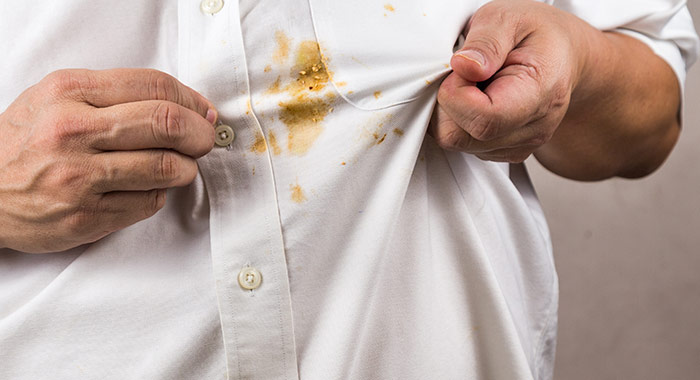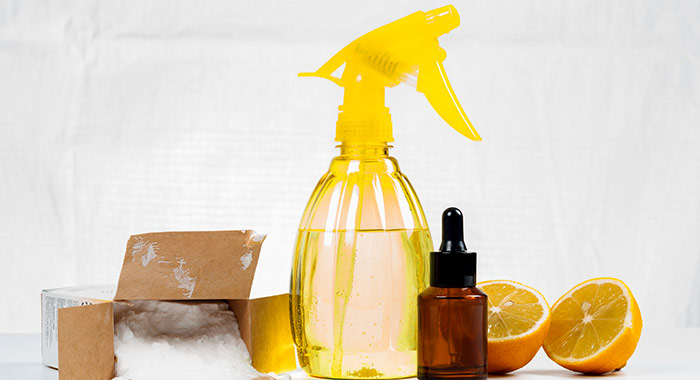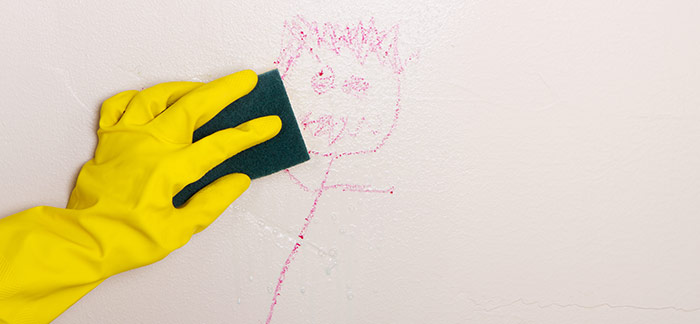|
Now that we’re all spending more time at home, those crayon marks on the wall, that red wine stain on the tablecloth, or the curry spill on your jeans may be crying out for attention.
The bad news is that the longer a stain has had to set, the tougher it is to remove. The good news, however, is that there are many homemade, all-natural remedies that are as effective as the commercial products.
An old toothbrush, lemon juice, toothpaste, vinegar and bicarbonate of soda are a few of your friends when it comes to DIY stain removal.
|
| It’s time to say goodbye to those ugly spots, and here is how: |
- Crayons: to get those marks off the wall, dip an old toothbrush in undiluted white vinegar or toothpaste and scrub (the acetic acid breaks down both the wax and pigment components of the crayon marks, and toothpaste contains a fine abrasive). Wipe with a clean, damp cloth. Junior scribbled crayons in the bath? Slice a piece off a cucumber and use the rough skin like a rubber to remove the marks.
- Pen marks: hairspray and nail polish remover are tried and tested but hand sanitiser is a surprisingly effective new alternative if you have spilt ink on your clothes or furniture. Another old home remedy for clothing is to soak the item in milk overnight, then launder as normal.
- Khoki pen: mix one tablespoon of liquid dishwashing detergent and one tablespoon of white vinegar with two cups of warm water. Using a clean white cloth, sponge the stain with the solution, blotting frequently with a dry cloth until the stain disappears. Flush with clear water. This should do the trick on most surfaces.
- Stickers: Whether these are on the car window or an interior wall, you can soak the sticker in vinegar (or use a rag soaked in vinegar) to dissolve the glue, and then scrub.
- Grass: Good ol’ toothpaste on a toothbrush will tackle grass stains on clothing.
- Grease: Sprinkle baby powder or maizena (corn-starch) on, let it soak in for two minutes then brush off the excess. You also can apply dish washing liquid directly onto the mark, rubbing it in and letting it sit for a few minutes. Afterwards, wash the garment as instructed on the label. Out for dinner when melted butter spills? Ask for a sachet or two of artificial sweetener, sprinkle over the mark and blot straight away. When you get home, wash as above.
- Mould and mildew: Fill a spray bottle with half lemon juice and half water.
- Blood: For clothing, rinse the item as soon as possible in cold running water and then treat with vinegar or lemon juice. If the stain is on a mattress, you won’t be able to soak and launder but meat tenderiser is a surprising ally. Mix it into a paste with a handful of salt or bicarbonate of soda and rub it onto the mark. Cover and let it sit for an hour, then remove the moisture by dabbing with a dry towel.
|
|
Common food stains
|
 |
|
You can tackle many food stains just as easily. Once again, speed is of the essence and, when it comes to clothes, always read the label first.
|
- Coffee or fruit juice: Run cold water over the back of the stain straight away, until the water running through is clear. If the stain is too old or it persists, rub a mixture of water and detergent or dish soap over it. Let it sit for a few minutes, then wash the mixture off.
- Red wine: Treatment depends on where it splashes but in general it’s important to mop up as much of the liquid as possible, starting from the outside of the spill. Don’t rub or it can spread the stain.
- Clothes: Use salt or bicarbonate of soda with the first step to flush the spill with cold water and then blot with a clean cloth. A white cloth works best so you can see if you’re soaking up the wine. Sprinkle salt or bicarb over, wait three minutes then rinse with cold water. Repeat this step as needed. You also can use white vinegar to neutralise red and pink wine (which is why you sometimes hear people recommend pouring white wine over a red wine spill). Pour white vinegar over, rub in liquid laundry detergent then wash the garment in hot water.
- Tablecloth: Boiling hot water should do the trick. Take a heat-proof bowl or pan, stretch the section of the tablecloth with the wine spill over it, and secure with string or a large rubber band– the tablecloth needs to be taut. Hold the kettle about 10cm above the stain and carefully pour the hot water over the stain.
- Carpets: Sprinkle a layer of salt over a red wine spill as soon as you can. First though, take paper towel or a clean cloth to blot as much of the liquid as you can. Don’t rub it or scrub it! Once the salt has dried, vacuum it up.
- Curry: Mix one tablespoon of dishwashing liquid, one tablespoon of white vinegar and two cups of warm water. Take a clean white cloth and sponge he stain with this solution. Blot frequently with a separate, dry cloth until the stain disappears.
|
|
Make your own bleach
|
 |
|
Shop-bought stain removers can contain toxic chemicals and they often are more expensive. Commercial chlorine bleach, for example, is harsh and its fumes can cause headaches and dizziness, or worse if exposure is prolonged.
Homemade “bleach” smells better, does not irritate the skin, the fumes are not toxic, and it’s a breeze to make.
|
|
Homemade bleach recipe
|
- 3/4 cup 3% hydrogen peroxide (ask at your pharmacy)
- 1/4 cup lemon juice
- 1 tablespoon citric acid
- 6 cups of filtered water
- 20 drops lemon essential oil
- 2 litre bottle with lid
Make sure you buy the 3% dilution of hydrogen peroxide, as you can get a more concentrated solution which is stronger but not recommended for home use.
Pour all ingredients into a clean, empty 2 litre bottle and swirl until the citric acid has dissolved.
It’s better to store in glass bottles than plastic, and the peroxide will lose its strength and oxidise over time so try to use within a month.
Store in a cool, dark place, or wrap in brown paper, as exposure to light will make it oxidise faster.
|
|
You can use this homemade bleach wherever you would use thin commercial bleach, such as for cleaning clothes, nappies, toilets, tiles, mirrors and more.
Who knew that your bathroom and baking cupboards and veggie rack carried the keys to a clean and healthier home?
|
|

